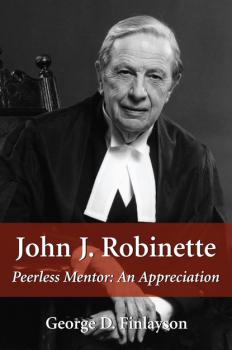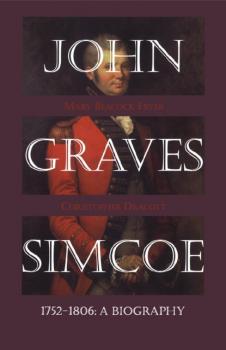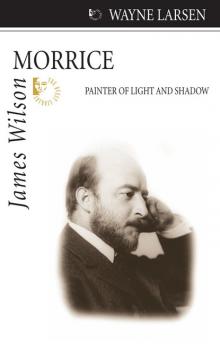ТОП просматриваемых книг сайта:
Биографии и Мемуары
Различные книги в жанре Биографии и Мемуары, доступные для чтения и скачиванияАннотация
By the time Amelia Hall died suddenly in December 1984 she had become one of Canada's most respected and well-loved actresses. In this book she has left an incomparable record of her early years in the professional theatre in Canada. In particular, these memoirs chronicle the history of the Canadian Repertory Theatre of Ottawa, one of the first professional repertory theatres in Canada. Under Amelia Hall's direction in the late forties and early fifties, the CRT gave a start to the careers of such notable Canadian actors as Christopher Plummer, Eric House, William Hutt, Ted Follows and William Shatner. In these days of long-running corporate subsidized extravaganzas, it is instructive to read of the struggles and accomplishments of these pioneers of theatre in Canada, performing weekly repertory on a shoestring budget, with few facilities adn minuscule salaries. Yet it was these enthusiasts who provided the basis for the flowering of the Canadian theatrical scene in the 1960s and 1970s. It is appropriate that these memoirs should culminate in Amelia Hall's portrayal of the Lady Anne in Richard III opposite Alec Guinness at the first Stratford Festival in 1953, making her the first Canadian and the first woman to speak on the Stratford stage. This book is lavishly illustrated with photographs from Amelia Hall's personal collection, now housed at the National Archives of Canada.
Аннотация
Lake of the Old Uncles recounts a trip that began three-quarters of a century ago in a small village inn nestled in the Laurentian hills of French-speaking Quebec. One day, the trip will end at the village cemetery, just one kilometre from the inn. The traveller is the author. The trip is not long, but is rich in rural and natural experiences along the way. Gerard Kenney takes us along the route that led him to build the lone log cabin on the small and inaccessible Lake of the Old Uncles. No roads reach the pond, only a footpath. The hours spent in the quietude of the forest cabin have had an effect on the author that has resulted in a personal philosophy, both rural and natural, inspired by his hero, Henry David Thoreau. Gerard Kenney shares with his readers the evolution of his philosophy through his personal experiences with people and with the wilderness flora and fauna he has encountered on his life’s journey.
Аннотация
How do we begin to describe our love for our children? Pamela Richardson shows us with her passionate memoir of life with and without her estranged son, Dash. From age five Dash suffered Parental Alienation Syndrome at the hands of his father. Indoctrinated to believe his mother had abandoned him, after years of monitored phone calls and impeded access eight-year-old Dash decided he didn’t want to be «forced» to visit her at all; later he told her he would never see her again if she took the case to court. But he didn’t count on his indefatigable mother’s fierce love. For eight more years Pamela battled Dash’s father, the legal system, their psychologist, the school system, and Dash himself to try and protect her son – first from his father, then from himself. A Kidnapped Mind is a heartrending and mesmerizing story of a Canadian mother’s exile from and reunion with her child, through grief and beyond, to peace.
Аннотация
Kathleen Rice was an inspiring woman who lived ahead of her time. Born in St. Marys, Ontario, she graduated as a gold medallist in Mathematics at the University of Toronto in 1906. After a conventional beginning teaching school in Ontario and Saskatchewan, Kate broke free of the mold, searching for new frontiers as a prospector in Manitoba during the gold rush. She formed a partnership with Dick Woosey and began a life in the remote areas around Herb Lake, prospecting and trapping. After Woosey’s death, Kate faced her final and most difficult challenge – living alone in the wildness of the north.
Аннотация
Just Mary and Maggie Muggins are names that will arouse memories in those who grew up with CBC radio and television in the 1940s and 1950s. The creator of these and other children’s shows, former Fredericton schoolteacher Mary Grannan, became a radio star when she hit the national airwaves in 1939, her popularity peaking when Maggie Muggins moved to television in 1955. Long before The Friendly Giant and Mr. Dressup appeared, her work helped to shape the legacy of gentle children’s programming on CBC. Building on her broadcasting success, Grannan published over thirty books, most runaway best-sellers. Attired in stylish dress, extravagant hats, and enormous earrings, she made frequent guest appearances at public events across the country. She received the Beaver Award for her broadcasting and was honoured by the International Mark Twain Society and the Institute for Education by Radio at Ohio State University. "Just Mary": The Life of Mary Evelyn Grannan is the first biography of this creative and once well-known Canadian woman. Immersing the reader in rich detail while showcasing excerpts of her writings through the years, the book presents an intimate examination of her life journey through previously unreleased personal letters, archives, an abundance of photographs, and interviews with family, friends, colleagues, and former students. This is the private Mary Grannan as the public has never before known her.
Аннотация
John J. Robinette, Canada’s greatest trial lawyer, was admired and respected by the bench and his fellow lawyers alike. A quiet, unassuming man outside the courtroom, he was a consummate performer when appearing before a judge and jury. Robinette became a household name as the defender of Evelyn Dick, who was charged with killing her husband and infant son in Hamilton in 1946, and of Steven Suchan, a member of the infamous Boyd Gang. He was Canada’s pre-eminent lawyer from the 1930s to the 1980s, showing unparalleled versatility and virtuosity whether acting as counsel in criminal, civil, or constitutional cases, at both the trial and appeal levels. This is the story of a great man, of the maturing of the legal profession in Canada, and of Canada in the twentieth century.
Аннотация
One of the legendary figures of Ontario history, John Graves Simcoe was the commander of the Queen’s Rangers during the American Revolution. In 1791 he was appointed the first lieutenant-governor of Upper Canada, and upon his arrival in 1792 he founded the town of York (present-day Toronto). John Graves Simcoe completes a trilogy of Simcoe books published by Dundurn Press. Mary Beacock Fryer’s Elizabeth Posthuma Simcoe was first published in 1989, while Our Young Soldier: Lieutenant Francis Simcoe, 6 June 1791-6 April 1812 was released in 1996. For this third volume, Fryer has teamed with Christopher Dracott, whose vantage point from Devonshire, England helps to provide this book with a complete view of Simcoe’s life.
Аннотация
In 1946, Winnipeg's struggling medical student received an injection of new life when scientist and army doctor Joe Doupe came home from the war. He assembled the school's first research group and in 1949, took over the physiology department. Doupe soon blended science and clinical teaching, objecting to their seperation in the curriculum, which was usual at that time. He required Winnipeg medical students of the 1950s and early 1960s to take a critical look at the scientific knowledge they relied on and in their methods of scientific inquiry. From his student days Doupe was considered argumentative, forever asking colleagues, superiors or students why they believed what they took for granted. The outcome was a generation of Manitoba medical students with a perceptive and sceptical attitude towards both textbook knowledge and new medical discoveries. Doupe also showed that Winnipeg's medical students, though small and distant from the great medical centres, could become a first-rate teaching and research establishment; in doing so he became one of Canada's most distinguished medical educators.
Аннотация
James Wilson Morrice (1865–1924) was a Canadian painter of extraordinary passion and simplicity whose canvases and oil sketches are valued throughout the world and cherished in Canada as our first real examples of modern art. Though cut short by chronic alcohol abuse, Morrice’s restless bohemian life was spent in constant motion. From the colourful canals of Venice to the sun-drenched markets of North Africa to the snowy streets of Quebec City, he was, as his friend Henri Matisse described him, «always over hill and dale, a little like a migrating bird but without any very fixed landing place.» In James Wilson Morrice, Wayne Larsen chronicles the creative but often troubled life of this early cultural icon as he travels in search of the colours, compositions, and subtle effects of light that would inspire a revolution in Canadian art.
Аннотация
"We took our positions, five kneeling and five standing … we got the order to fire. One blank and nine live rounds … I did not have the blank." That is the voice of Deward Barnes, an unwilling but dutiful member of the firing squad that shot Harold Lodge, one of 25 Canadians executed during the First World War. In this diary we hear something that is otherwise gone forever: the authentic voice of the First World War soldier, Everyman in khaki. Fully annontated so that everyone today can understand the nuance of each entry, the Barnes diary takes us into the trenches and the firing lines of the Western Front like no other first-hand Canadian account of that terrible war can. Like any trained infantryman, Deward could tell the kick of a live round from a blank one, and that kick he bestows on us with each turn of the page.










